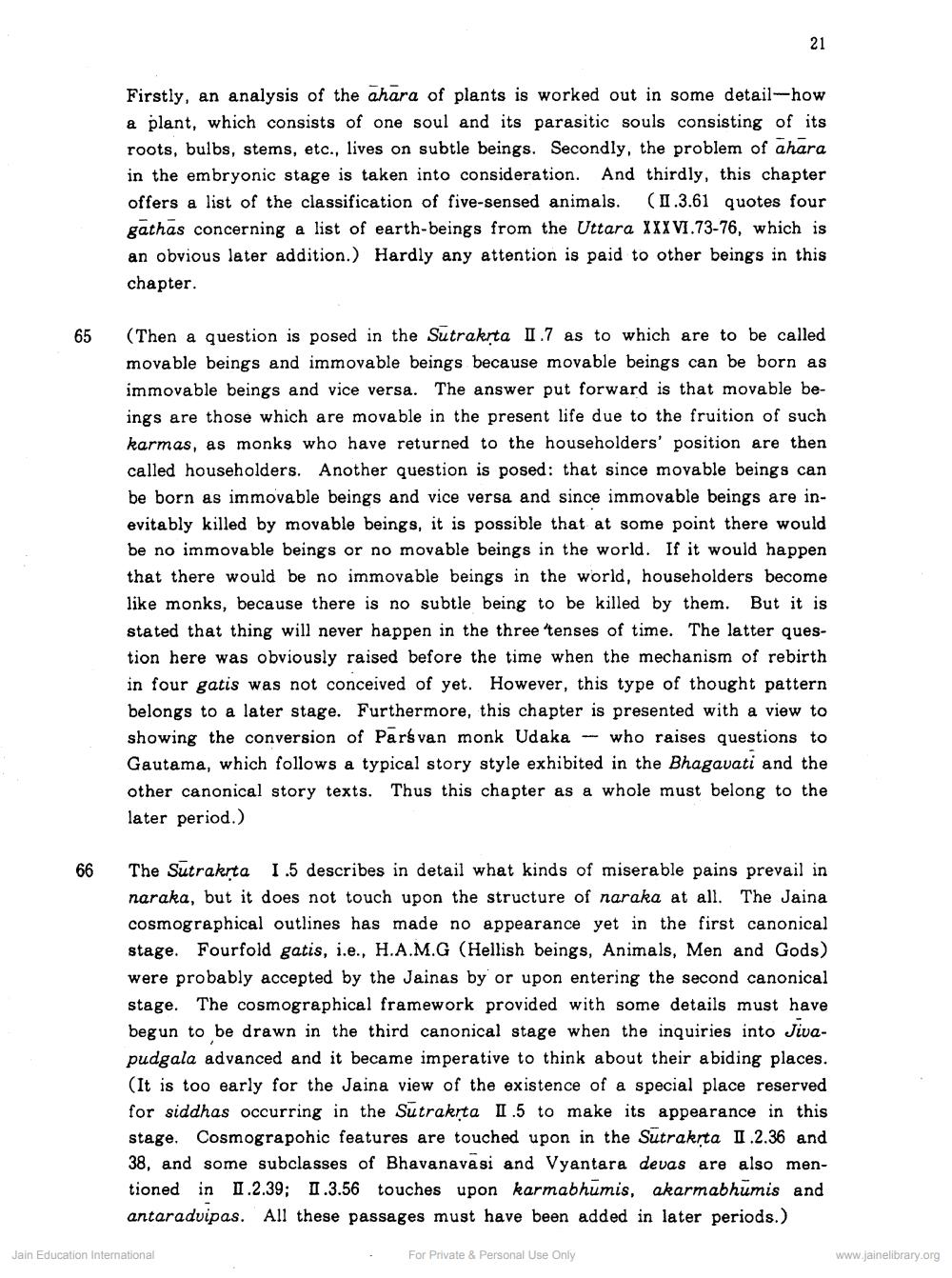________________
Firstly, an analysis of the ahara of plants is worked out in some detail-how a plant, which consists of one soul and its parasitic souls consisting of its roots, bulbs, stems, etc., lives on subtle beings. Secondly, the problem of ahara in the embryonic stage is taken into consideration. And thirdly, this chapter offers a list of the classification of five-sensed animals. (11.3.61 quotes four gathas concerning a list of earth-beings from the Uttara XXX V1.73-76, which is an obvious later addition.) Hardly any attention is paid to other beings in this chapter.
65
(Then a question is posed in the Sutrakrta 1.7 as to which are to be called movable beings and immovable beings because movable beings can be born as immovable beings and vice versa. The answer put forward is that movable beings are those which are movable in the present life due to the fruition of such karmas, as monks who have returned to the householders' position are then called householders. Another question is posed: that since movable beings can be born as immovable beings and vice versa and since immovable beings are inevitably killed by movable beings, it is possible that at some point there would be no immovable beings or no movable beings in the world. If it would happen that there would be no immovable beings in the world, householders become like monks, because there is no subtle being to be killed by them. But it is stated that thing will never happen in the three tenses of time. The latter question here was obviously raised before the time when the mechanism of rebirth in four gatis was not conceived of yet. However, this type of thought pattern belongs to a later stage. Furthermore, this chapter is presented with a view to showing the conversion of Parśvan monk Udaka — who raises questions to Gautama, which follows a typical story style exhibited in the Bhagavati and the other canonical story texts. Thus this chapter as a whole must belong to the later period.)
The Sutrakrta 1.5 describes in detail what kinds of miserable pains prevail in naraka, but it does not touch upon the structure of naraka at all. The Jaina cosmographical outlines has made no appearance yet in the first canonical stage. Fourfold gatis, i.e., H.A.M.G (Hellish beings, Animals, Men and Gods) were probably accepted by the Jainas by or upon entering the second canonical stage. The cosmographical framework provided with some details must have begun to be drawn in the third canonical stage when the inquiries into Jivapudgala advanced and it became imperative to think about their abiding places. (It is too early for the Jaina view of the existence of a special place reserved for siddhas occurring in the Sutrakrta 1.5 to make its appearance in this stage. Cosmograpohic features are touched upon in the Sutrakrta 1.2.36 and 38, and some subclasses of Bhavanavasi and Vyantara devas are also mentioned in 1.2.39; 1.3.56 touches upon karmabhumis, akarmabhumis and antaradvipas. All these passages must have been added in later periods.)
Jain Education International
For Private & Personal Use Only
www.jainelibrary.org




